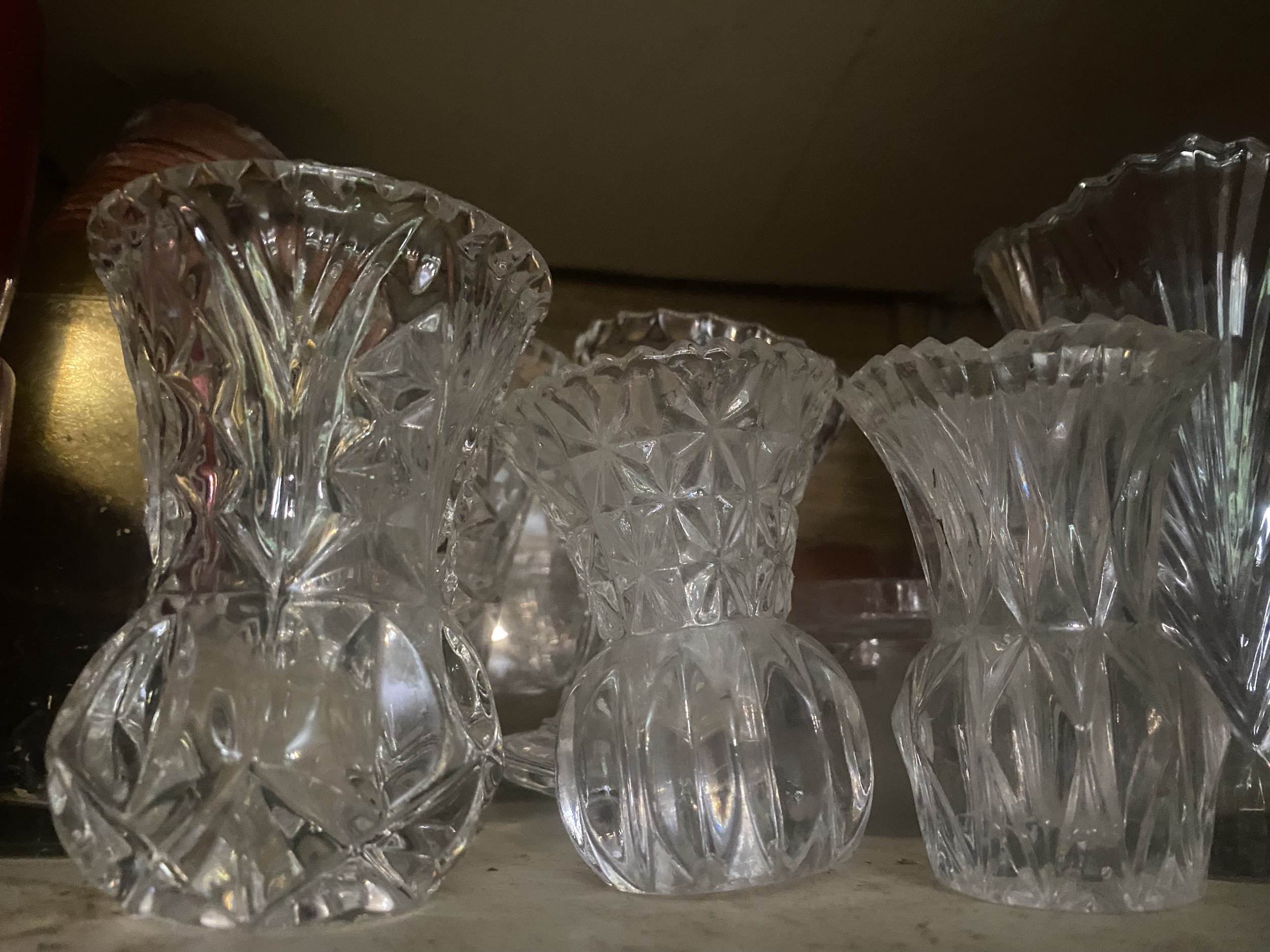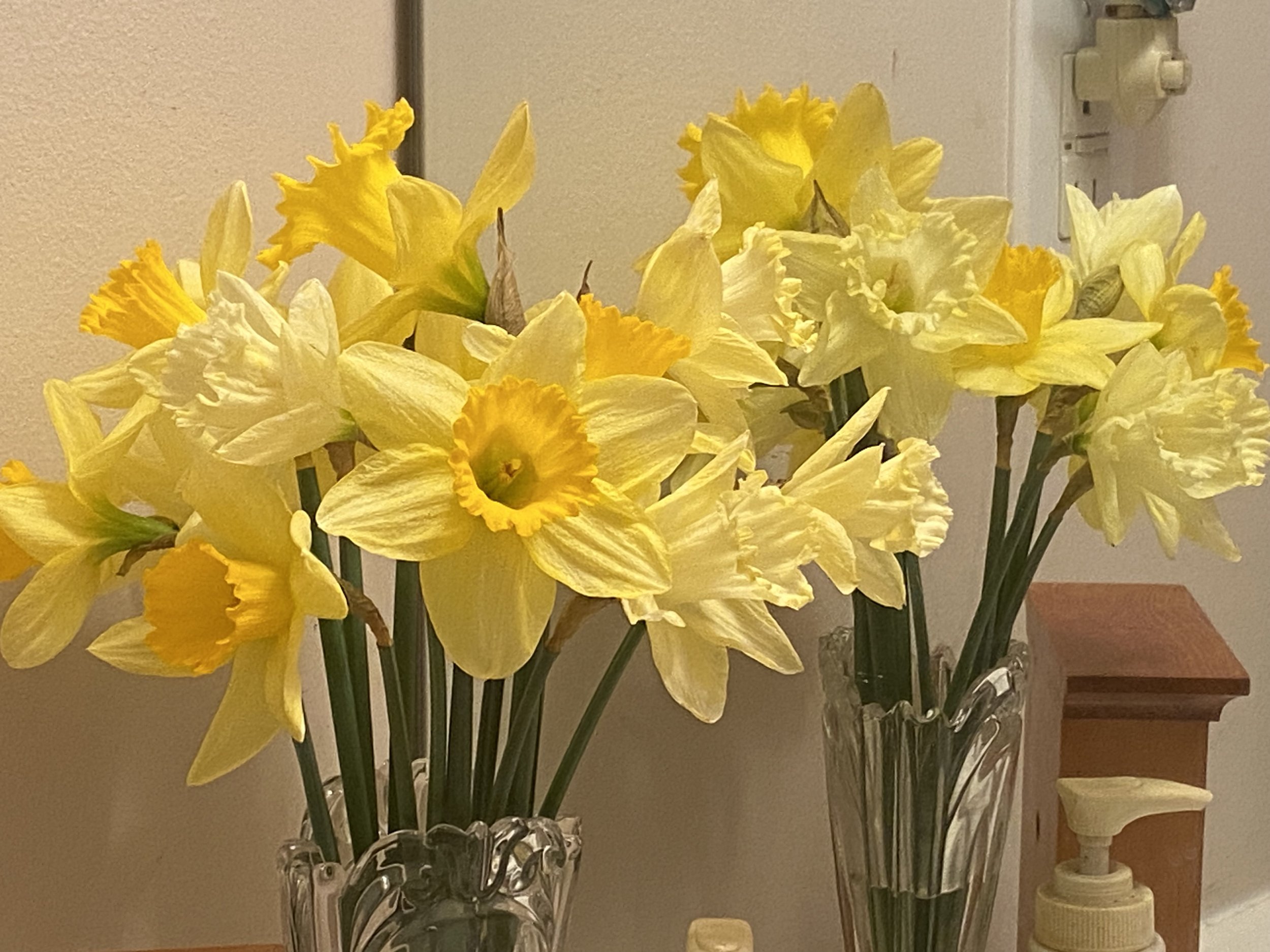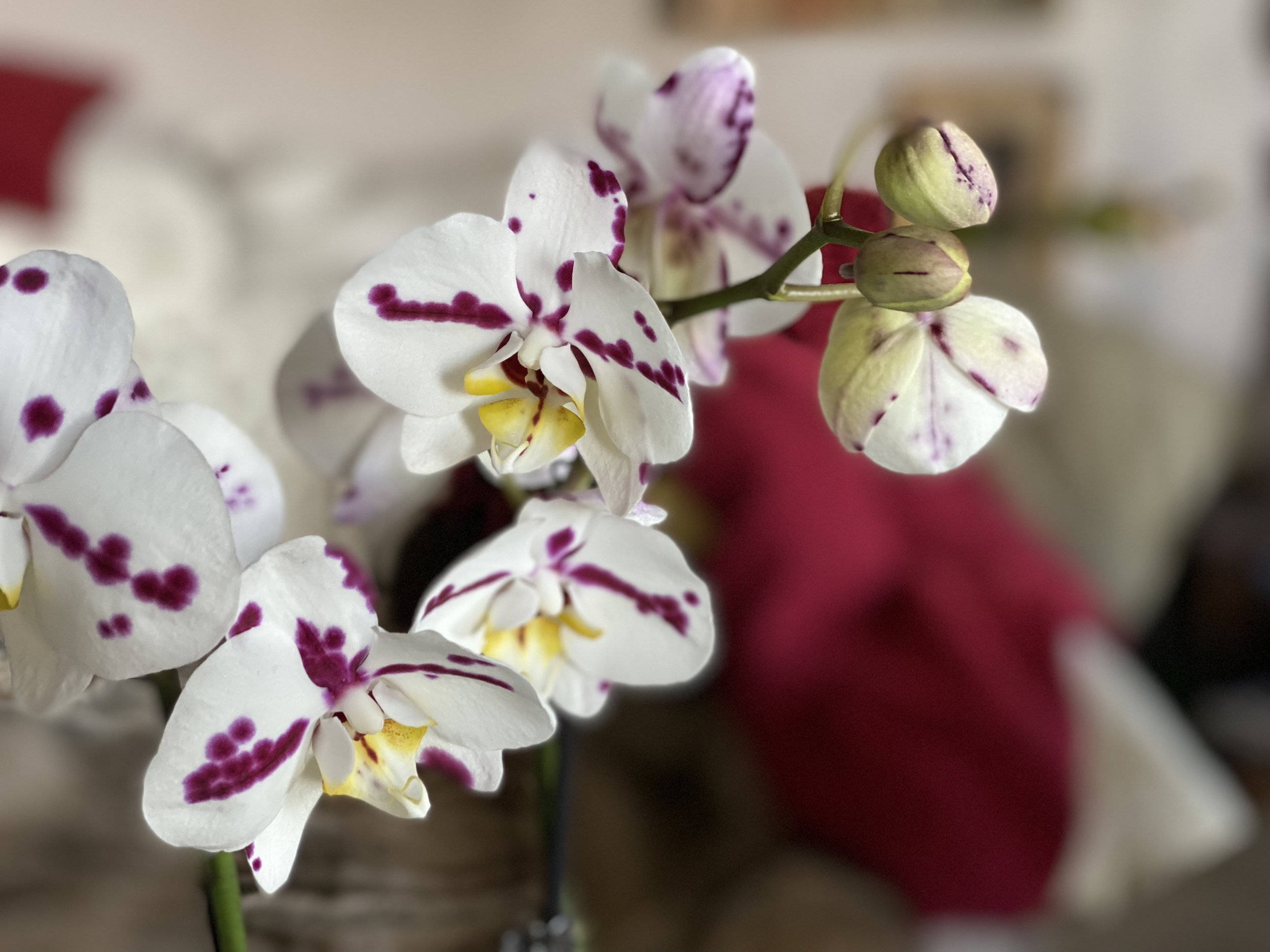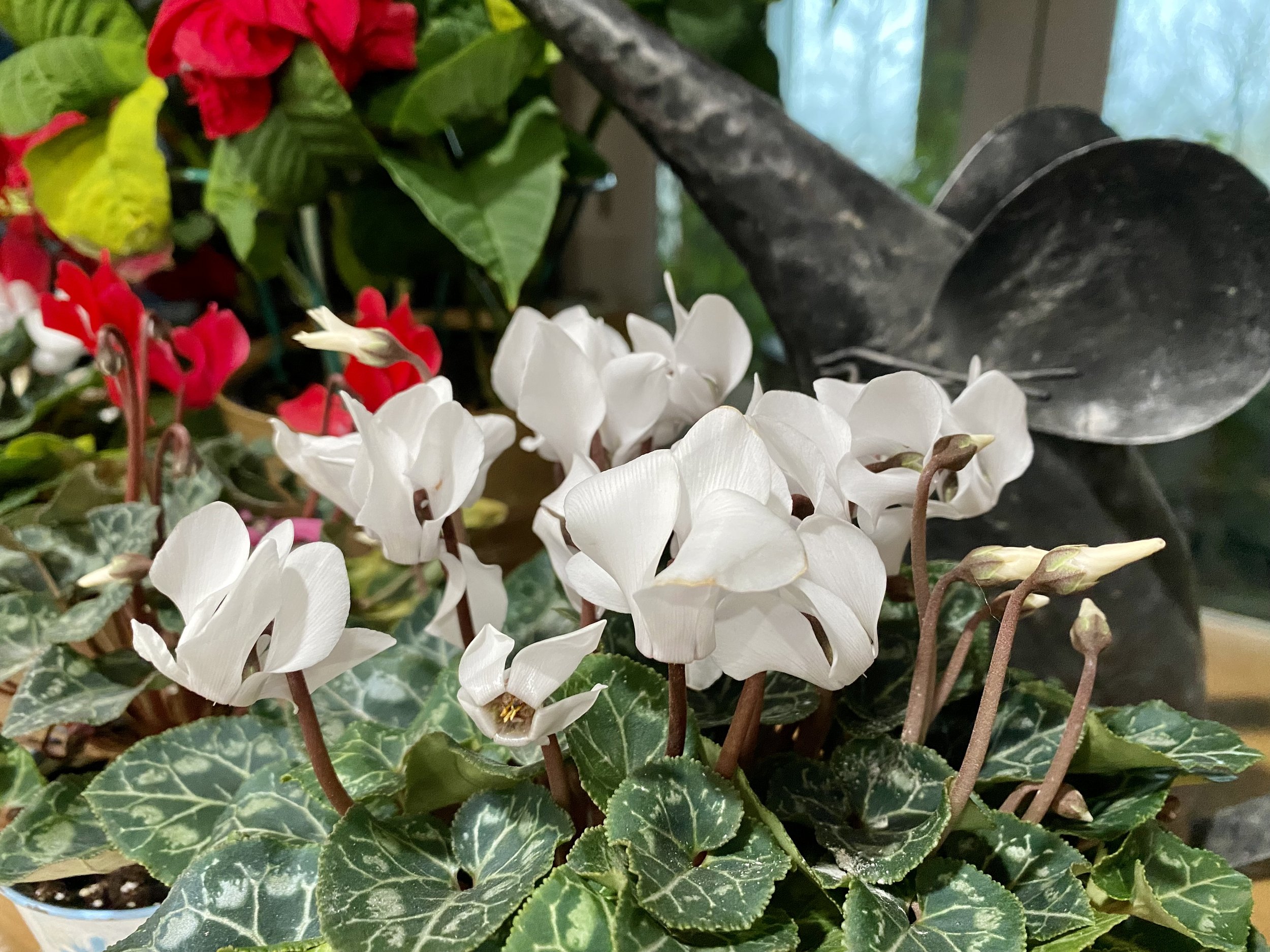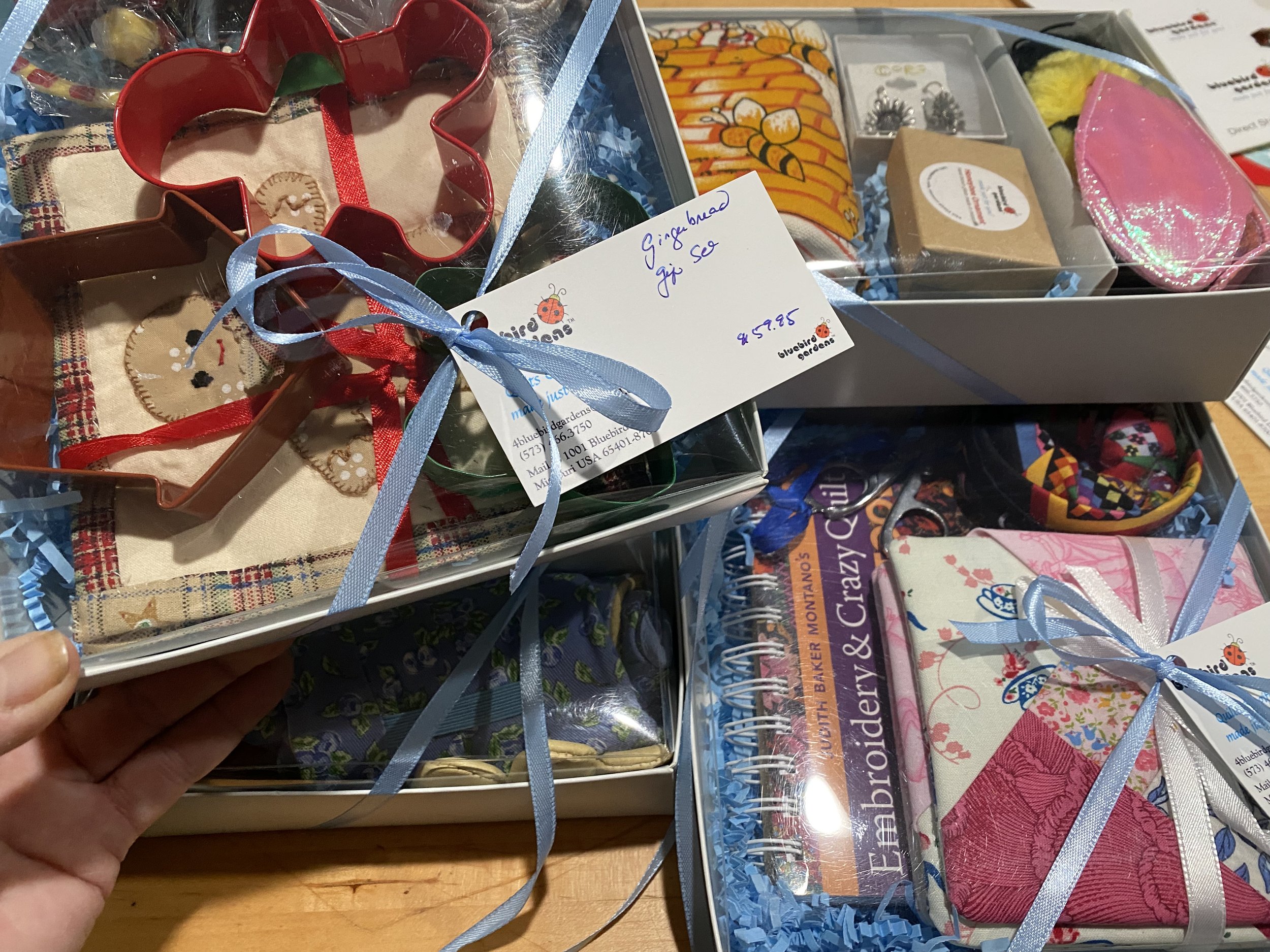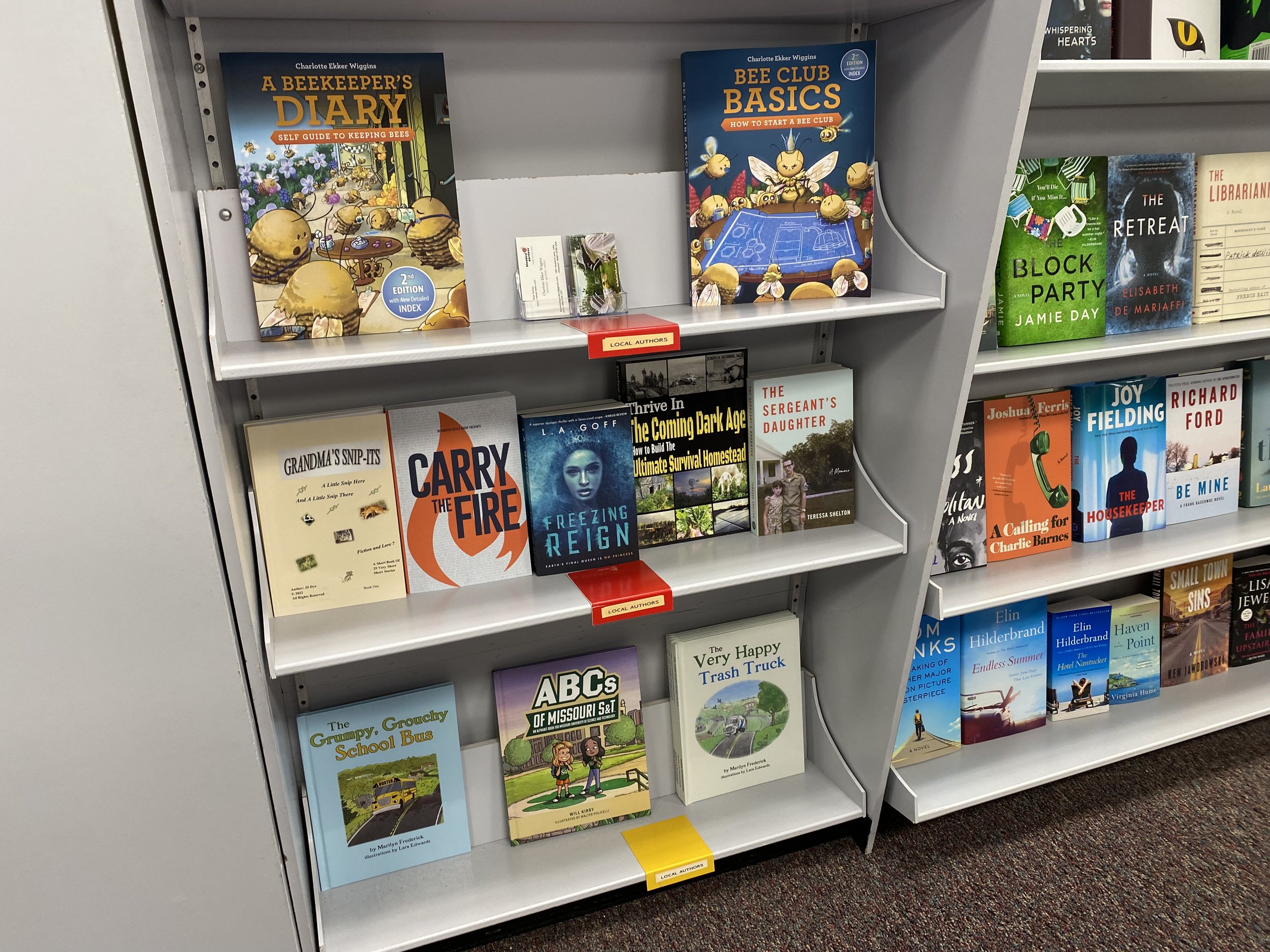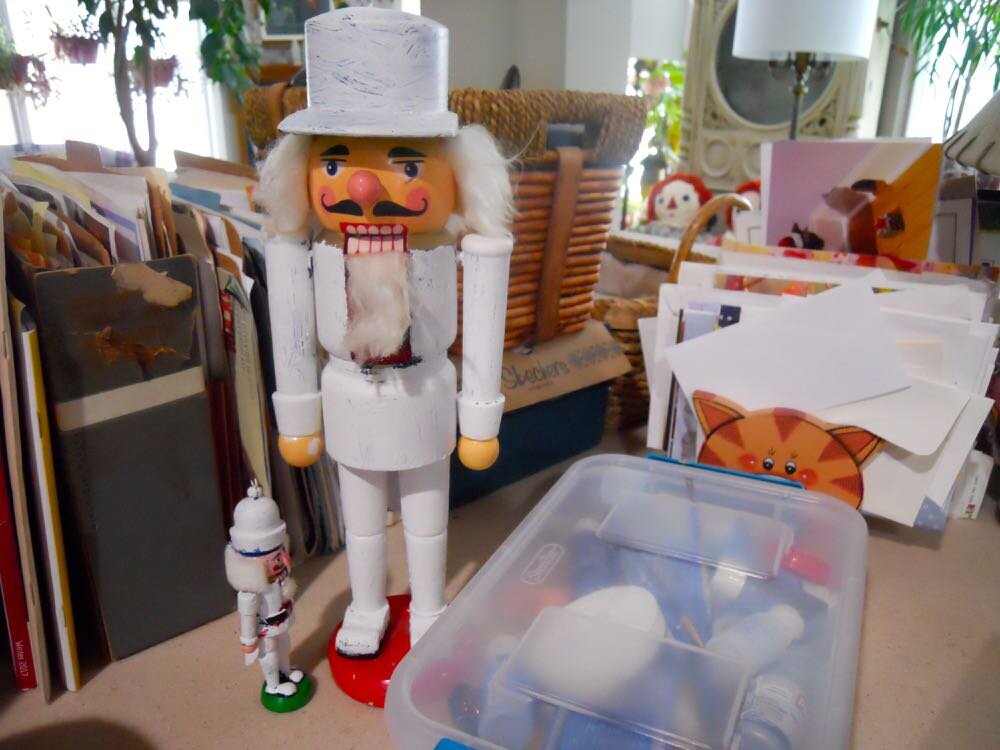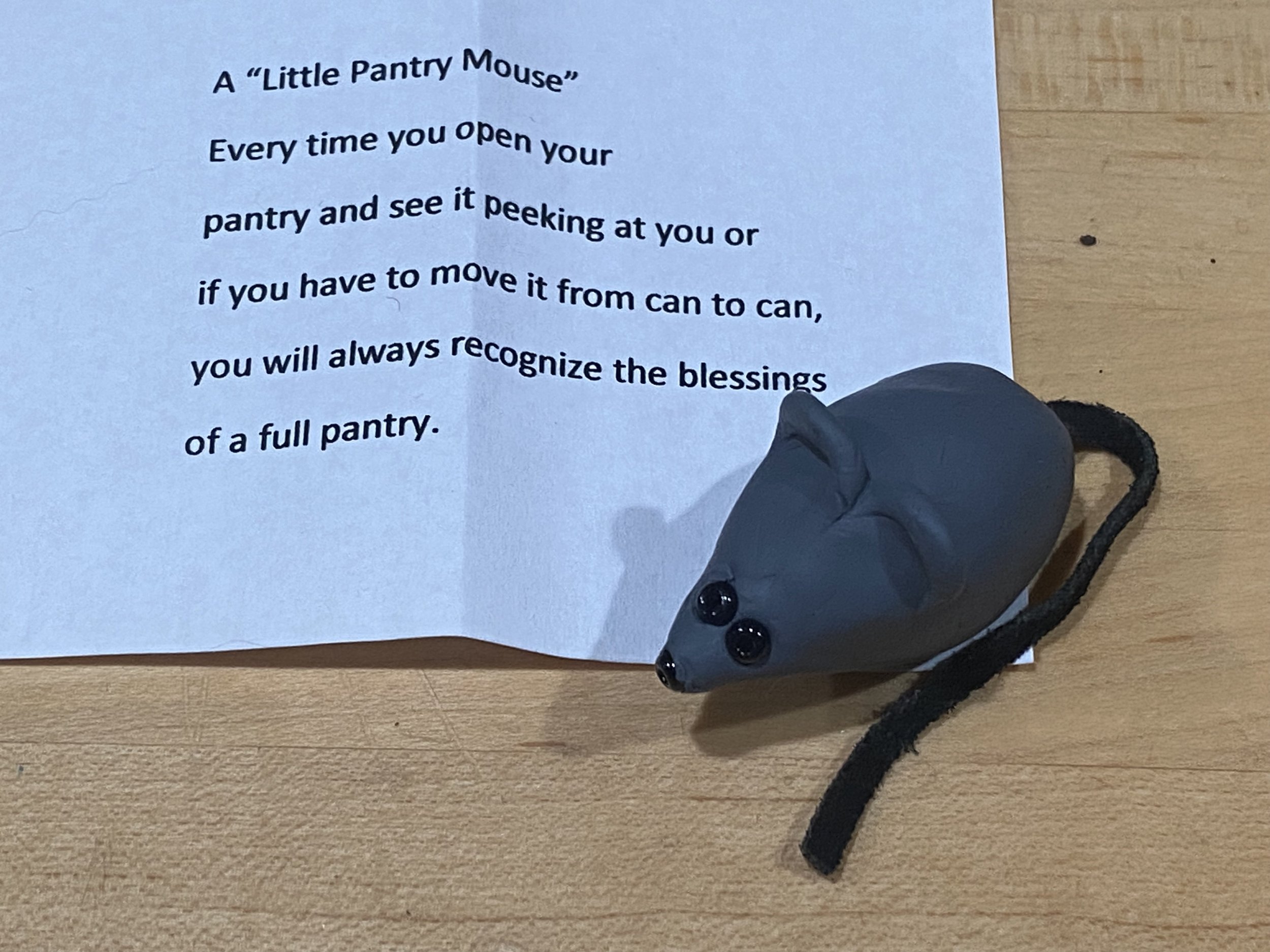Small Flower Vases
/This colorful syrup dispenser is one of my favorite small flower vases holding geraniums, phlox and wild germander. (charlotte ekker wiggins photo)
Small Flower Vases
Let’s face it, sometimes we don’t have huge armfuls of flowers to make bouquets to enjoy in our homes and offices. Especially this time of year, when record hot temperatures and a drought are challenging our gardens, we’re lucky to find a bloom here and there to bring inside.
added my little handblown bee for the finishing touch! (charlotte ekker wiggins photo)
That’s when small flower vases come in handy, and they don’t have to be actual vases.
What you’re looking for is something small enough to fit on a table or shelf that will highlight one or two flowers.
here are some other pitchers and containers with handles that make charming flower vases. (charlotte ekker wiggins photo)
Syrup and Creamers
When I stop by thrift stores and yard sales, I look out for creamers and syrup dispensers. They come in a variety of shapes and sizes so I scope out ones that will fit nicely on a desk or table without taking over the space.
These small vessels are perfect for making small fresh flower bouquets. At times all I find growing in my garden is one or two flowers. With a little greenery those can nicely make a pop of freshness.
toothpick holders make excellent small flower vases. (charlotte ekker wiggins photo)
Crystal Toothpick Holders
If you like something more formal, keep an eye out for crystal toothpick holders. I’ve found two sizes, both excellent for tiny bouquets. The only issue is you need to keep an eye on the water level or they can easily go dry.
Personalized Gift Ideas
Over the years I’ve also collected these small vases to give as gifts full of flowers. Especially for hospitals and friends recovering from surgery, the smaller flower arrangements are easier to manage.
Regardless of size, keep several sizes handy so you can enjoy flowers inside all year around!




